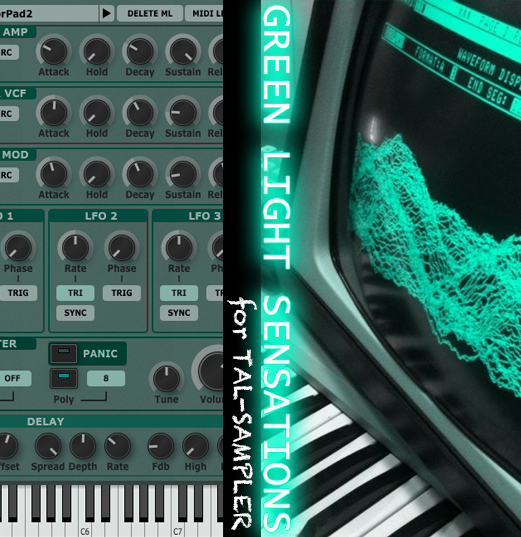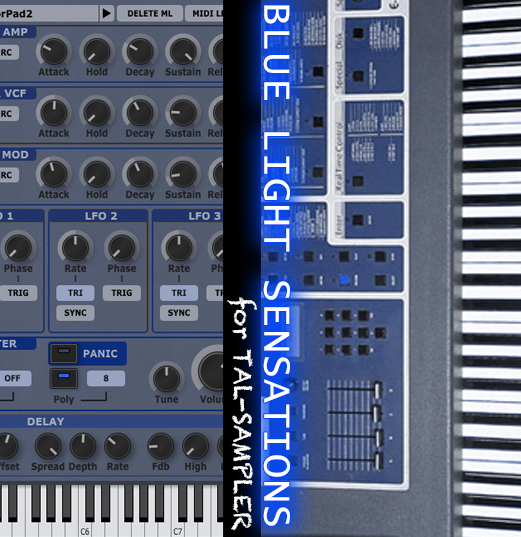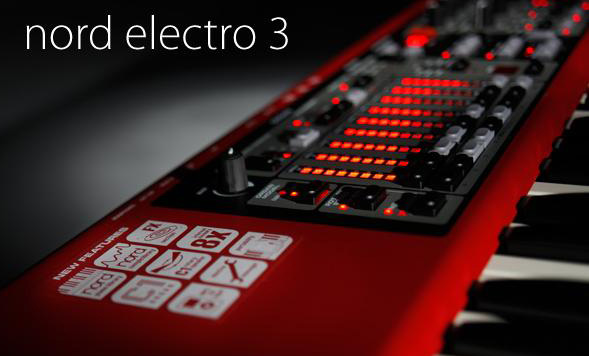A simple retrowave track made using Korg Gadget and Cubasis 2 on my iPad pro. The project is available on Gadgetcloud.
Author Archive: Content admin
Crockett’s theme (GPRMusic electro rmx)
A remix of one of my favourites OST, the Miami Vice soundtrack, by Jan Hammer. An electro version mad with my beloved synthesizers. In details:
1) Roland JX-10 – Synth pad
2) Arturia CMI V – Synth voice
3) Roland JD-XA main theme
4) Roland JD-XI fills and analog EFXs
5) TAL Sampler with “Blue Light Sensations” – Emulator II pluck
6) TAL Sampler with “SamP-330” – VP330 strings
7) Arturia Spark 2 with Spark LE – Drums
8) Roland System-8 (Juno plugout) – Bass sequence
9) Roland System-8 – Synth lead
10) Roland XV-3080 – Distorted guitar
11) Roland XV-3080 – Lead guitar
Blue light sensations
After “Green Light Sensations” dedicated to the Fairlight CMI IIx, another sample library dedicated to two of the most wide used samplers in the World, the Emulator II and the EMAX. Again, using the powerful engine of TAL-Sampler a huge, exciting and playable sound set at your fingertips. All the feelings of the original machines enriched by the powerful engine of the versatile sampler of TOGU Audio Line in a very unique fashion. If “Green Light Sensation” is big, this is huge: 1867 timbres meticulously programmed, organized in categories and ready to be used in your projects or modified as you want without the need to make complex scripts.
Only for 29 euros.
Christmas ’80 disco
A retro style disco funk made using only Korg Gadget for iPad.
Gadgets used:
1) Recife: drums
2) Lexington (ARP Odissey): synth bass, synth sequence, efx
3) Montpellier: synth stab
4) Milpitas: synth bells
5) Berlin: first lead
6) Darwin: second lead and synth strings.
You can download the project on Allihoopa directly from Korg Gadget.
Fastlove – Electro version (feat. Eugene)
An “electro” cover of my favourite George Michael’s songs of all time made with my good friend Eugene (@eugenemusic).
- Eugene – lead vocals and vocoder
- Drums – Arturia Spark + external loops
- Synth bass – Roland System-8 with SH-2 plugout
- Synth lead – Korg King Korg
- Synth whistle – Korg King Korg
- Synth pads – Roland JX-10
- Synth strings – Korg King Korg
- Synth sequence – Roland System-8 with Juno 106 plugout
- Electric Piano – Nord Electro 3
- Synth EFX and noises – Roland System-8 with SH-101 plugout
Nord Electro 3 official GPR Music setup
After 6 years using the Nord Electro 3, I was able to complete my ideal setup I use in my compositions. You can download it as a Nord backup and transfer to your Nord Electro 3 (only) using the Nord Sound Manager tool and its “restore” functionality.
Ableton Link, iPad and external equipment…alltogether!
Ableton Link is an amazing technology developed by Ableton, that lets musicians play music together, staying in sync and using the a WIFI network. The power of this technology is that, when integrated inside a musical application it becames seamless: the musician only has to activate the external sync. It’s became widely diffused in a short period of time in such a way to be considered quite a standard nowadays, especially for what concerns the various apps programmed for the iOS environment to make music.
Let’s take a brief look at how it works, considering all the possible scenarios, standard ons and “non standard” ones, eheheh.
Novation Mininova programming part 2 – A synth bass
After our first discussion about programming a synth lead on the Novation’s baby, the Mininova, in this brand new appointment we’ll try to program a punchy synth bass taking advantage of the powerful and efficient synthesis engine of this machine.
Programming a synth bass is generally a quite straightforward process because the rules to follow are not too many, but I think one good rule to follow is “simple but with a lot of possibilities under the hood”. What does it mean? Well, it means that the timbre should be built using few sound sources but many modulation sources in order to let the musician variate the timbre “on the run” and give his execution much more character and fun.
In other words, a synth bass is quite different from an acoustic bass or electric bass so don’t try to hide the fact that it’s produced from a synthesis engine but use this last one to produce something that would not be possible instead. Obviously, don’t forget the kind of timbre you need for the music you’re playing/composing/recording so…always search for the right compromise.
So let’s start with our programming: DAW opened, Mininova AU editor loaded and we’re ready to go!





